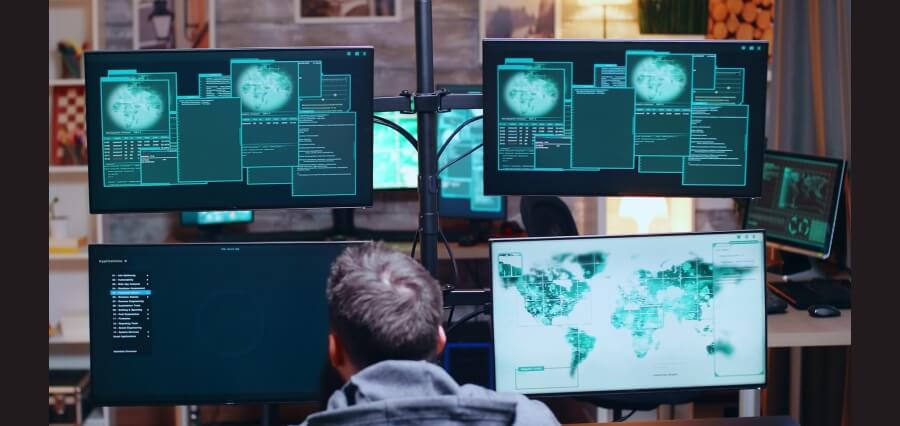Control room technologies (CRT) stand as the backbone of monitoring and management systems. Control rooms are centralized hubs where all critical data converges, decisions are made, and actions are directed. They incorporate a plethora of technologies from basic surveillance equipment to advanced automated systems that integrate artificial intelligence (AI) and machine learning (ML).
Historically, the evolution of control room tech has been marked by significant milestones—from manual gauges and analogue systems to digital displays and AI-driven predictive analytics. This transition has not only revolutionised how operations are managed but also reshaped the role and responsibilities of the operators themselves.
As we look forward, the trajectory is set towards even more sophisticated integrations, including the advent of control room automation (CRA) which promises to redefine current operational protocols. This article aims to dissect these changes, exploring how they’ve impacted operator roles and what future developments we might expect.
Summary of Coming Attractions
Expect a deep dive into the following areas:
- Historical progression of control room technologies
- Analysis of control room automation and its implications
- Future trends and predictions for control room operations
Table 1: Milestones in Control Room Technologies
| Year | Milestone | Description |
| 1980s | Introduction of Digital Displays | Transition from analog to digital to enhance readability and integration. |
| 1990s | Networked Systems | Introduction of LAN and later WAN systems for better data sharing across sites. |
| 2000s | Advanced SCADA Systems | Implementation of sophisticated Supervisory Control and Data Acquisition (SCADA) systems for enhanced process automation. |
| 2010s | Integration of AI and ML | Beginning of AI utilisation for predictive maintenance and anomaly detection. |
| 2020s | Control Room Automation | Shift towards fully automated control systems, reducing the need for human intervention. |
The Historical Progression of Control Room Tech
Let’s kick off with a bit of history. Back in the ’80s, control rooms were often cluttered with manual controls, analogue readouts, and a constant buzz of operator communication. Fast forward to the 1990s, tech took a massive leap forward with the introduction of digital systems and the early forms of networked communications. This era saw the rise of graphical user interfaces (GUIs), which significantly decluttered control panels and made monitoring processes easier and more efficient.
The 2000s were all about connectivity and real-time data acquisition. With the advent of SCADA systems, operators could monitor and control processes over large distances, leading to the concept of centralised control rooms that could manage multiple operational sites simultaneously.
The Pivot to Control Room Automation Tech
Cue the 2010s, and we’re looking at the intro of AI and ML into control rooms. But it’s the 2020s that have really turned up the tech dial with the onset of control room automation. This isn’t just about reducing the grunt work; it’s about integrating systems that can independently analyse, decide, and act without constant human input. For operators, this means a shift from manual control to more of a supervisory role focusing on system oversight, decision-making under critical conditions, and managing the AI that manages the systems. Exciting times, eh?
Predicting the Future: Where Are We Heading?
Looking into my crystal ball (just kidding—I don’t have one, but I do have loads of data and trends), the future of control rooms seems to be headed towards complete automation. However, this doesn’t mean humans are out of the picture. Instead, operators will transition into roles that require higher levels of technical expertise, overseeing automated systems and stepping in when exceptions arise that require human intervention.
The skills required will be less about quick reflexes on the control panel and more about analytical prowess, problem-solving, and tech savviness—ready to interact with advanced AI systems and possibly troubleshoot and fine-tune algorithms as needed.
Related Sources
Curious to dive deeper? Check out these studies and source:
- Overview of control room modernisation: [https://www.controlroommodernisation.com]
- Impact of AI on control room operations: [https://www.aiimpactoncontrolrooms.org]
- Future trends in control room technologies: [https://www.futurecontrolroomtrends.net]
- Autonomous Control Room Operations: [https://cruxocm.com/]
And there you have it! From clunky buttons and loud alarms to sleek screens and sophisticated AI—control room technologies have come a long way, and the journey’s nowhere near done. For tech enthusiasts like myself, it’s a thrilling ride. Stay tuned, and keep experimenting, because the next big innovation might just be around the corner.


